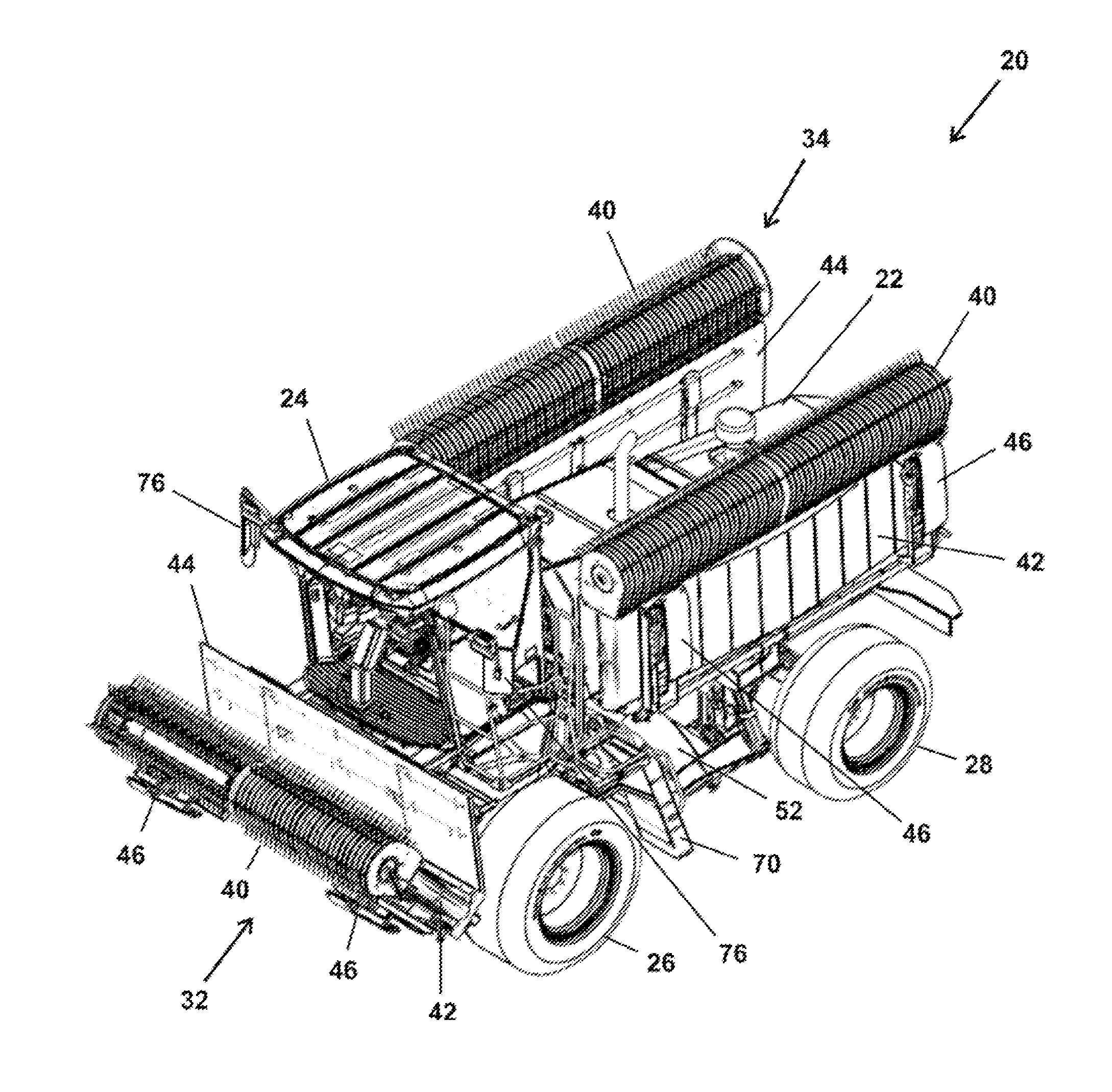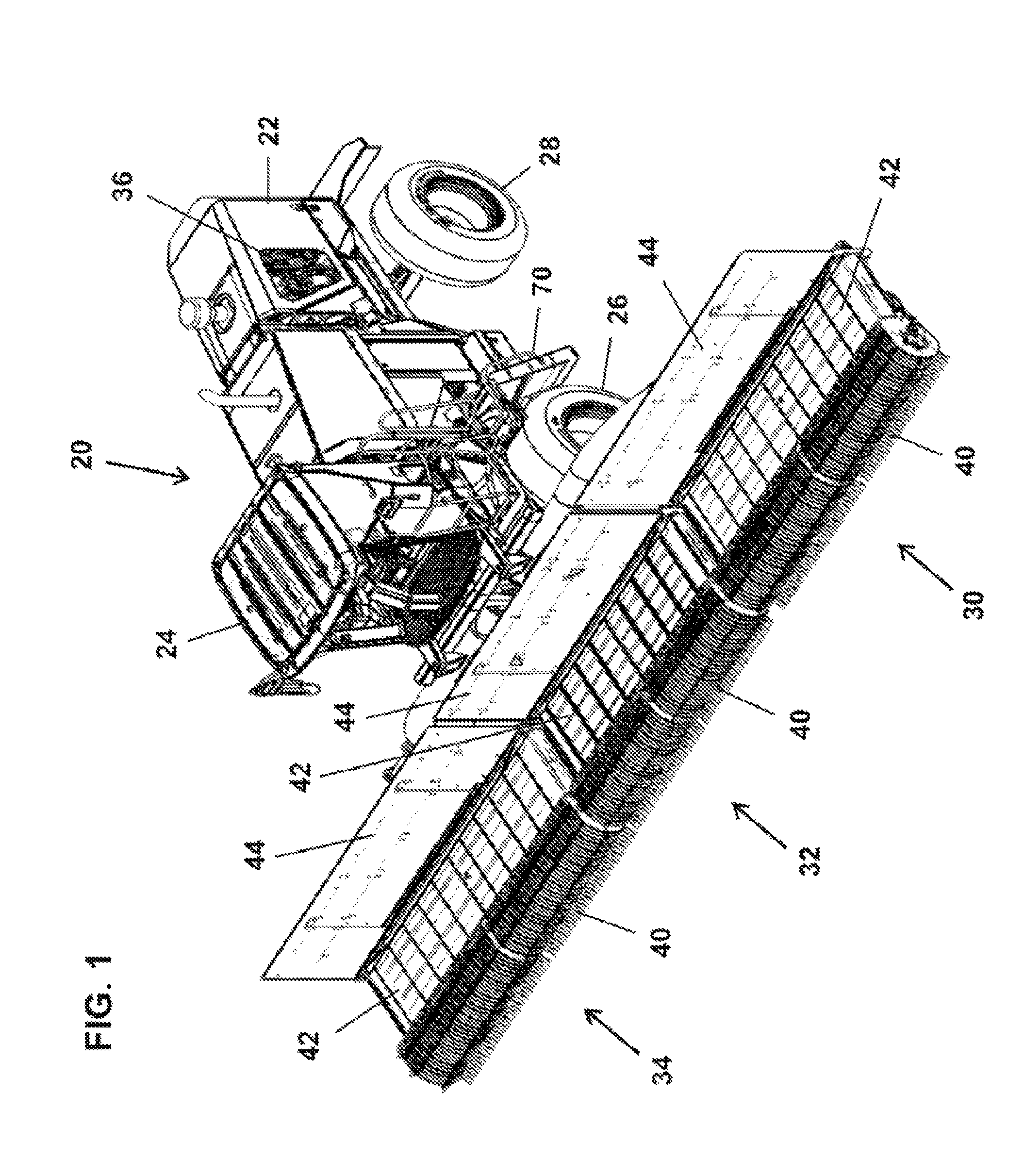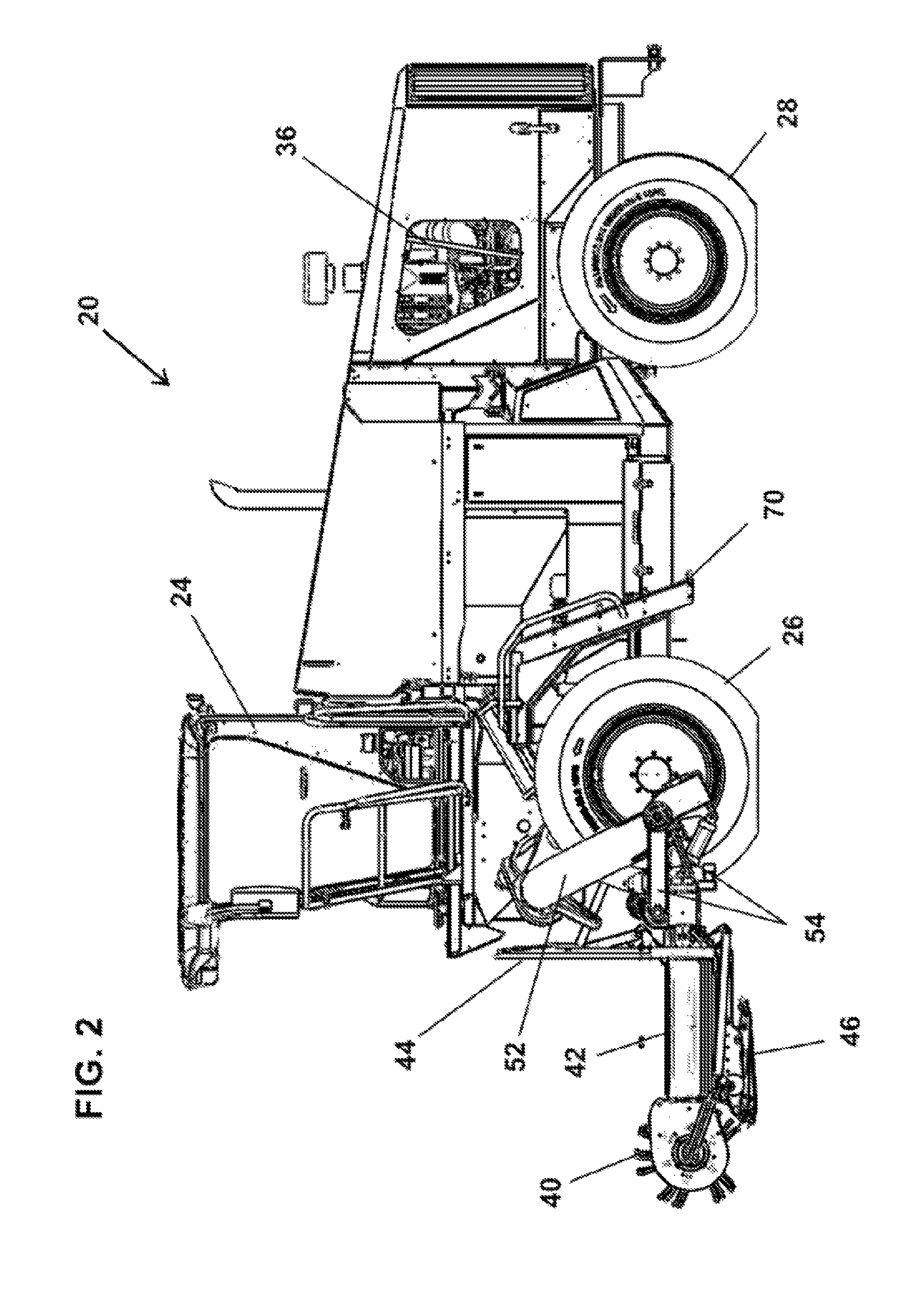Self-propelled windrow merger
a technology of self-propelled windrows and mergers, which is applied in the direction of agricultural machines, agricultural tools and machines, etc., can solve the problems of limited capacity of such mergers, size of merger devices, towing capacity and availability of tractors and other propulsion devices, and the width of merger devices
- Summary
- Abstract
- Description
- Claims
- Application Information
AI Technical Summary
Benefits of technology
Problems solved by technology
Method used
Image
Examples
Embodiment Construction
[0036]Referring now to the drawings and in particular to FIGS. 1-3, there is shown a self-propelled merger apparatus, generally designated 20. The merger apparatus 20 includes a chassis 22 extending rearward from an operator cab 24. The cab 24 includes a steering wheel and other controls for driving the self-propelled merger 20 and operating the pickup and transfer assemblies 30, 32 and 34. In the embodiment shown, the merger chassis 22 is supported on four wheels including front wheels 26 and rear wheels 28. The merger 20 includes rear wheel steering although other configurations are also foreseen. The merger 20 is powered by a motor 36 placed at the rear of the chassis 22.
[0037]The pickup and transfer assemblies 30, 32 and 34 form a continuous lateral transport path at the front of the merger 20. The lateral transport path provides for merging hay into windrows. Each of the pickup and transfer assemblies includes a head 40 including rows of tines rotating between flexible guards. ...
PUM
 Login to View More
Login to View More Abstract
Description
Claims
Application Information
 Login to View More
Login to View More - R&D
- Intellectual Property
- Life Sciences
- Materials
- Tech Scout
- Unparalleled Data Quality
- Higher Quality Content
- 60% Fewer Hallucinations
Browse by: Latest US Patents, China's latest patents, Technical Efficacy Thesaurus, Application Domain, Technology Topic, Popular Technical Reports.
© 2025 PatSnap. All rights reserved.Legal|Privacy policy|Modern Slavery Act Transparency Statement|Sitemap|About US| Contact US: help@patsnap.com



